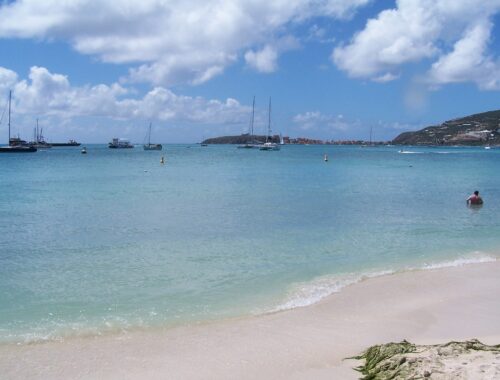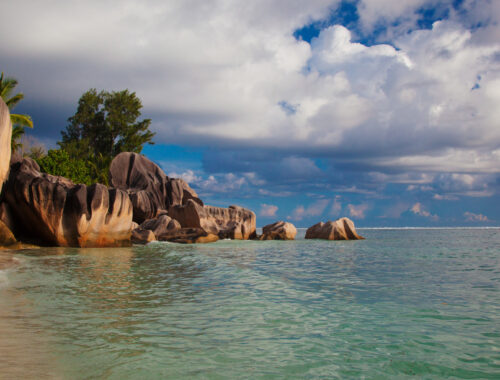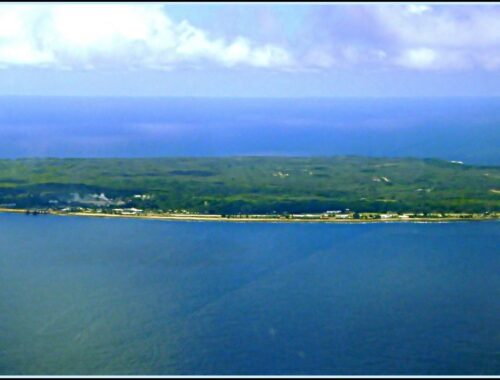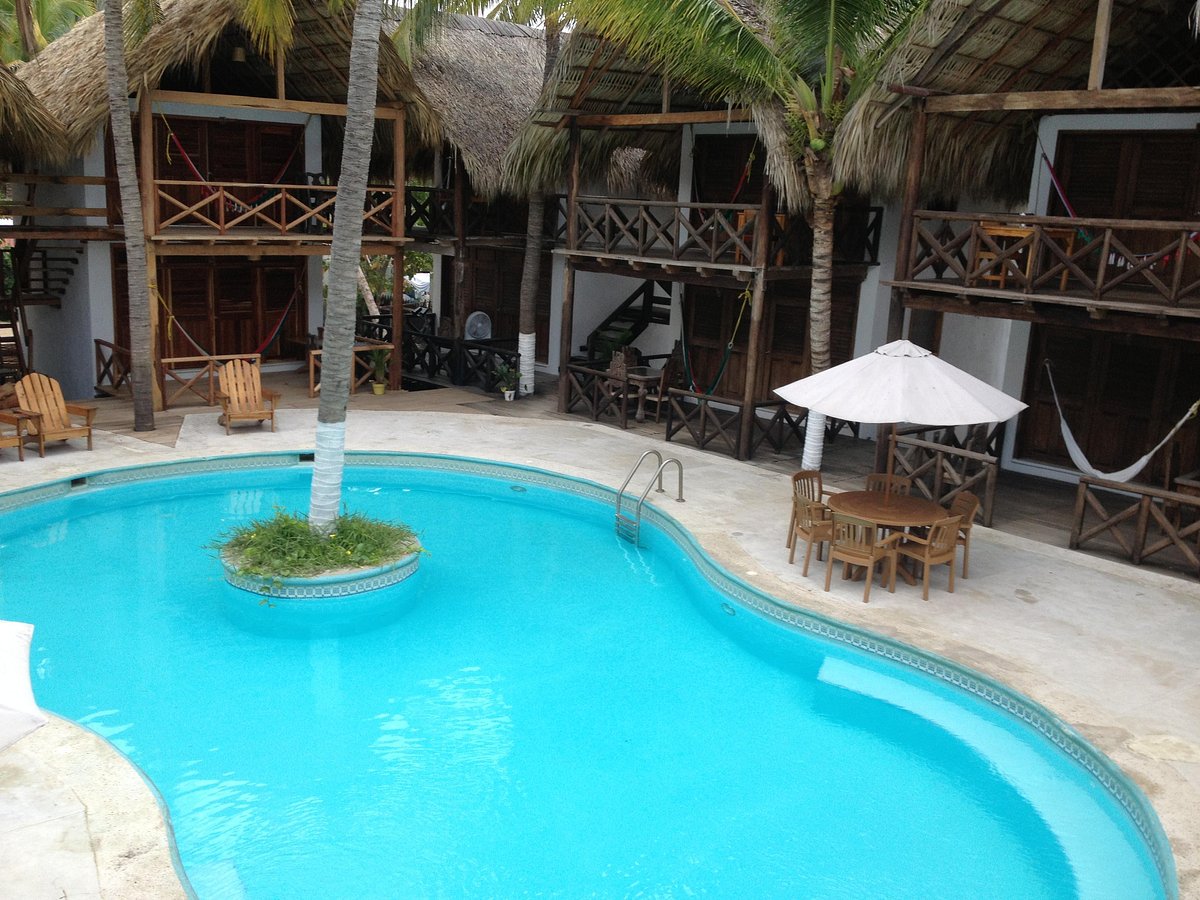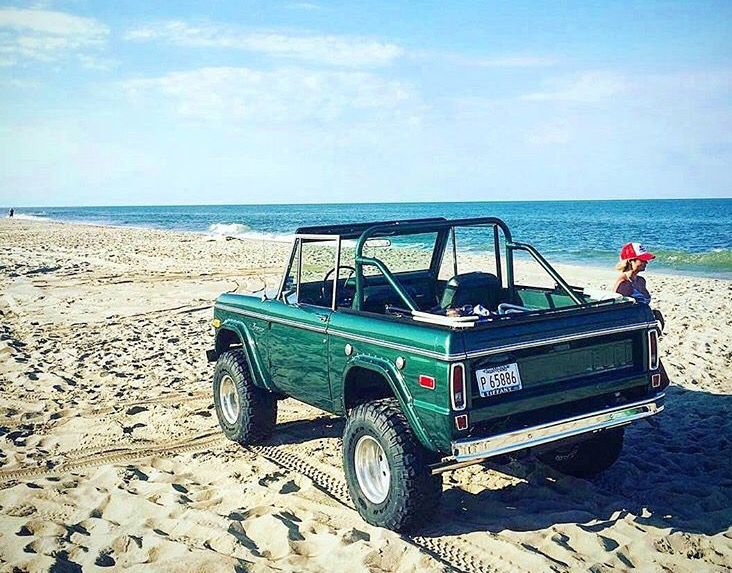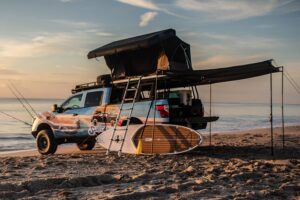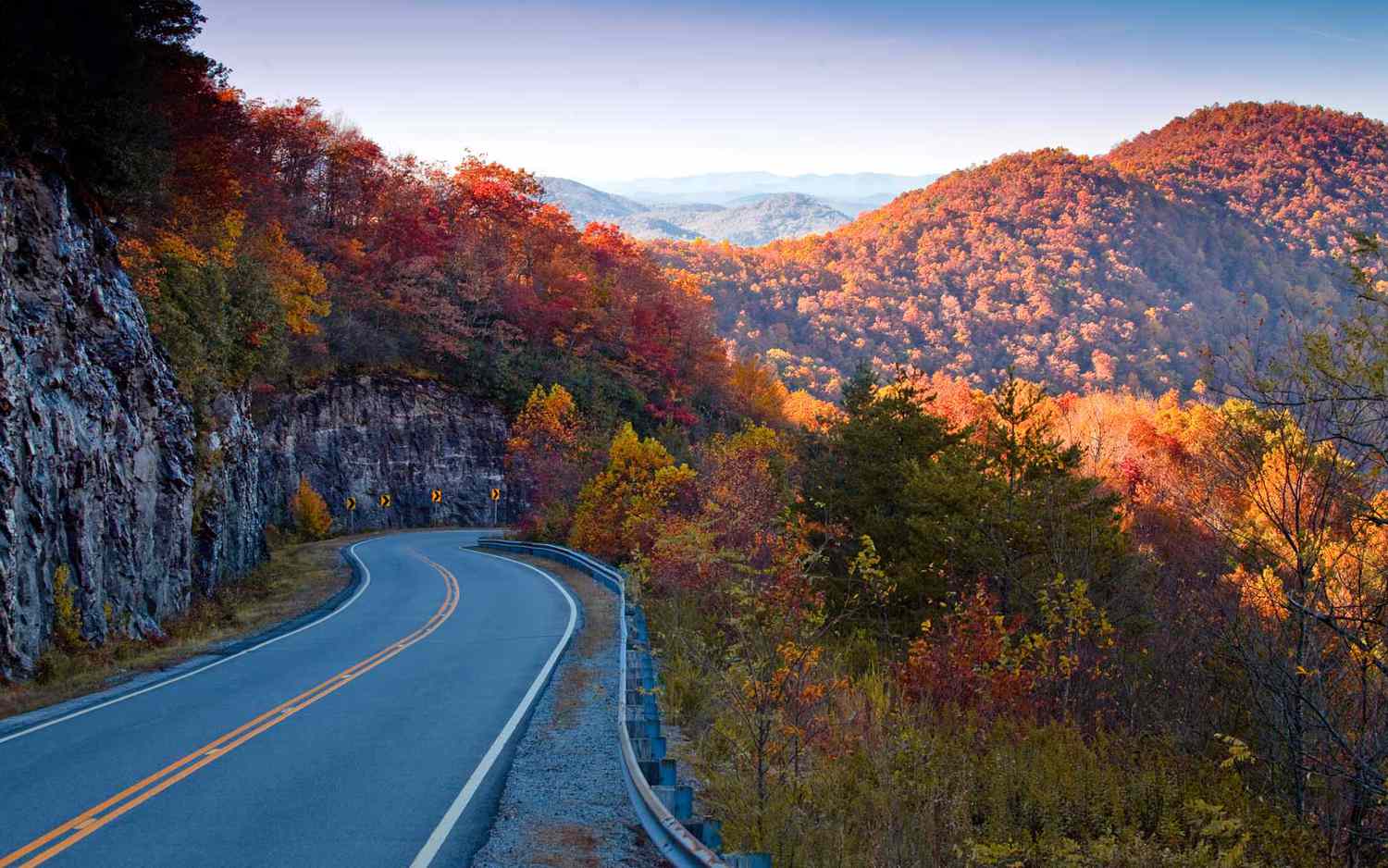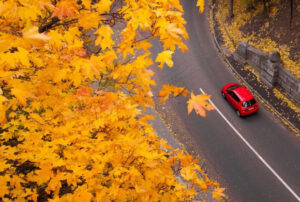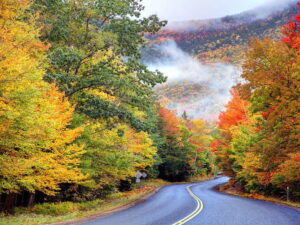Pashupatinath Temple lies on the banks of the Bagmati River, a beacon of faith and tradition that has stood the test of time in the bustling capital of Kathmandu This holy site is known as a spiritual haven, and not just a centerpiece of Nepal’s religious life ; It is a fabric woven with unwavering threads of culture, history and devotion that transcends the ages.
The essence of commitment
Imagine a place where the air carries age-old mantras, and the cobbled streets are filled with colorful humanity, anyone seeking solace or understanding that Pashupatinath Temple is such a place. It commands respect from all walks of life as the worshiped abode of Lord Shiva, the national deity. Here the spiritual dances with the divine, inviting all who wander in the surroundings to seize the moment and contemplate the divine aspects of life.
Pashupatinath Temple Bodh
Located on the banks of the Bagmati River in Kathmandu, Nepal, Pashupatinath Temple is more than just another temple; It is a symbol of faith, spirituality and architecture. This book delves into the significance of this temple in Hinduism, its status as a UNESCO World Heritage Site, and the unique architecture and vibrant festivals celebrated here.
A. The Spiritual Significance
Pashupatinath Temple holds a paramount place in Hinduism. It is dedicated to Lord Shiva, one of the major deities in Hindu culture, revered as the protector and transformer within the Trimurti, the Hindu Triad that includes Brahma and Vishnu. The temple serves as a site for asceticism, meditation, and worship, attracting thousands of pilgrims and ascetics from across the globe, especially from India and Nepal. Its recognition as a UNESCO World Heritage Site in 1979 further emphasizes its global significance, not just spiritually but also culturally and historically. This distinction marks it as an invaluable piece of human history and spirituality, preserved for future generations to experience and understand.
B. Architectural Splendor
The architecture of Pashupatinath Temple is a sight to behold. A blend of Nepalese roof-tiered structures, cubic constructions, and intricately carved wooden rafters, it showcases the excellence of traditional Nepali craftsmanship. Built in the pagoda style of architecture, the main temple houses a sacred lingam, or phallic symbol of Lord Shiva, and boasts a silver-plated door surrounded by images of various deities. The complex is sprawling, encompassing numerous other temples and ashrams, each displaying a facet of Nepalese temple architecture and offering a peaceful sanctuary for meditation and worship.
C. The Temple’s Festivals
Several festivals breathe life into Pashupatinath throughout the year, drawing devotees in large numbers. Some of the major festivals include:
- Maha Shivaratri: This is the Great Night of Shiva, celebrated with great fervor. Hundreds of thousands of pilgrims visit every year to offer prayers, observe a day-long fast, and participate in the all-night vigil.
- Teej: Dedicated predominantly to the women of Nepal, this festival signifies marital happiness and well-being. Women clad in red sarees visit the temple, perform rituals, and sing and dance to traditional songs.
- Bala Chaturdashi: In remembrance of the deceased, families scatter sesame seeds and offer prayers throughout the temple complex.
Weather and seasons in Kathmandu
Exploring the Pashupatinath Temple, the spiritual heart of Nepal, is a very different experience from the highs and lows of Kathmandu. Your visit can be greatly enhanced by understanding the weather and seasonal changes in Kathmandu, allowing you to connect more closely with the cultural and religious life that is intimately associated with the ancient stones of the temple.
A. Overview of Kathmandu’s Climate
Kathmandu’s climate is primarily tempered by its location in the Kathmandu Valley and its altitude. The city experiences four distinct seasons:
- Spring (March to May): This season sees warm days with cool mornings and evenings. Temperatures typically range from 10°C in the mornings to 28°C during the day. This is a beautiful time of year, with flowers blossoming across the city and the valley.
- Monsoon/Summer (June to August): The monsoon season brings heavy rainfalls, rejuvenating the valley with lush greenery. Temperatures are warm, between 20°C and 30°C, but the humidity can make it feel warmer.
- Autumn (September to November): Characterized by clear skies and mild weather, autumn sees temperatures ranging from 10°C to 25°C. It is considered one of the best times to visit Kathmandu for its festivals and clear mountain views.
- Winter (December to February): Winters are cold, especially in the mornings and evenings, with temperatures sometimes dropping below 0°C at night. Daytime temperatures can rise to about 20°C, making it a chilly but often sunny time to explore.
B. How Weather Affects Your Visit
The changing climate of Kathmandu can dramatically affect your experience at Pashupatinath Temple:
- Spring: The temple comes alive with color and vitality. The temperate climate makes exploring the extensive temple grounds pleasant. Spring is also a significant time for Hindu festivals, making it an ideal season to witness the cultural vibrancy of Pashupatinath.
- Monsoon/Summer: Visiting during the monsoon can be challenging due to heavy rainfall, which might limit your movement and outdoor rituals. However, the temple in the rain has a unique, serene ambiance; just be prepared with waterproof gear.
- Autumn: With clear weather and moderate temperatures, autumn provides the perfect backdrop for visiting Pashupatinath Temple. The festival of Dashain, usually in October, sees the temple and its devotees in a flurry of religious activity.
- Winter: The cold can be biting, especially early in the morning or late in the evening during aarti ceremonies. Yet, the quieter nature of the temple during winter can offer a more meditative and reflective visit.
Best Times to Visit
Visiting the sacred Pashupatinath Temple in Kathmandu offers a rich tapestry of cultural and spiritual experiences. The timing of your visit can significantly influence your experience, from navigating through crowds to enjoying pleasant weather. Understanding the peak seasons, weather patterns, and budget-friendly times can help you plan an enriching visit to this historic sanctuary.
A. Peak Tourist Seasons
Kathmandu’s Pashupatinath Temple sees fluctuations in tourist traffic throughout the year, which can impact both your temple visit and accommodation arrangements.
- High Season (September to November): Autumn brings clear skies and moderate temperatures, making it ideal for visiting Pashupatinath Temple. However, this is also when tourist traffic is at its peak, making temple grounds more crowded and accommodation rates higher.
- Low Season (June to August): The monsoon season sees fewer tourists due to heavy rainfall. While temple access can be more challenging due to wet conditions, you’ll find fewer crowds and more competitive prices for accommodation.
B. Optimal Months for Weather
Weather plays a crucial role in planning your visit. Here’s a breakdown:
- January to February: Cold with daytime temperatures around 10°C. Clear days may offer a peaceful visit, albeit chilly.
- March to May: Warm weather with temperatures up to 30°C. Spring is vibrant, making it a pleasant time for temple visits.
- June to August: Monsoon season brings heavy rain, causing potential disruption but offers a unique, lush experience of the temple surroundings.
- September to November: Post-monsoon, the weather is cool and clear, ideal for exploration.
- December: Begins to get colder, but the early part of the month is still manageable for visits.
C. Recommendations for Budget Travelers
Budget-conscious travelers can maximize their experience with strategic timing:
- Consider Early December or Late February: These periods border the colder winter months but escape the peak season’s high prices. You’ll find fewer crowds and better deals on accommodation.
- Monsoon Season (June to August): If you don’t mind the rain, this season offers the lowest prices on accommodation and fewer tourists. It’s ideal for those looking to explore Pashupatinath Temple in solitude and save money.
Festival Calendar and Events
A visit to Pashupatinath Temple in Kathmandu can become even more memorable if complimented by the vibrant festivals and events that occur throughout the year. The communion of devotees, special rituals, and mesmerizing cultural traditions add a unique charm to the temple experience.
A. Maha Shivaratri
Maha Shivaratri holds a place of prime significance in the annual calendar of Pashupatinath Temple. Celebrated usually in February or March (on the 14th day of the dark fortnight of the Hindu month Phalgun), this festival honors Lord Shiva, to whom the temple is dedicated.
During Maha Shivaratri, the temple turns into a hive of activity. Hundreds of thousands of devotees, including a large number of Sadhus (holy men), gather at the temple from across India and Nepal. Visitors can expect to witness rituals performed throughout the night, ceremonial fires, meditative chants, and processions – all creating an intense spiritual atmosphere.
B. Teej and Other Festivals
Teej, typically in August or September, is another significant festival celebrated mainly by Hindu women in Nepal. Women adorn themselves in red sarees and gold jewelry, fast for marital bliss, and participate in dances and songs. The crowd of colorfully dressed women at Pashupatinath Temple during Teej is a beautiful spectacle.
Other notable festivals include:
- Janai Purnima (August): Known as the Sacred Thread Festival, it sees thousands of Hindus and Buddhists come to the temple to perform rituals and change their Janai (sacred thread).
- Bala Chaturdashi (November or December): Devotees scatter seeds in memory of their departed loved ones, turning the temple grounds into a sea of glowing lights.
C. Special Puja Events
Special pujas (prayer rituals) and astrologically significant events are common occurrences at the temple. For example:
- Saturn’s Day Puja: Conducted every Saturday as Saturn is a disciple of Lord Shiva. Devotees undertake this puja to eliminate negative effects in their astrological charts.
- Purnima (Full Moon Day) Puja: On every full moon day, special rites are performed in honor of Lord Shiva, attracting many devotees.
The temple management frequently organizes other special pujas on various astrologically auspicious dates. Visitors intending to participate or witness such special pujas can check the temple’s official calendar.
Festival Calendar and Events at Pashupatinath Temple
The Pashupatinath Temple in Kathmandu is not only a marvel of architecture but also a hub for a multitude of festivals and events throughout the year. Each festival paints the temple in new colors of traditions and rituals, attracting devotees and tourists alike.
A. Maha Shivaratri
Maha Shivaratri is the pinnacle of festivals celebrated at Pashupatinath Temple. It’s a festival in devotion to Lord Shiva, occurring annually around February or March.
- Significance: It marks the day Lord Shiva is believed to have saved the world from darkness and ignorance.
- Date: Follows the lunar calendar, generally on the 14th day of the waning moon in the month of Phalgun.
- Visitor Experience:
- Witness all-night worship and the chant of ‘Om Namah Shivaya.’
- See an influx of Sadhus, some covered in ashes.
- Observe thousands of lamps lighting up the temple.
B. Teej and Other Festivals
Apart from Maha Shivaratri, there are multiple festivals throughout the year that highlight the cultural richness of Pashupatinath.
- Teej:
- Celebrated predominantly by women for marital bliss.
- The temple is adorned with red as women dress in vibrant sarees.
- Fasting, singing, and dancing events take place.
- Other Key Festivals:
- Janai Purnima: It’s a day when Hindus renew their commitment to the faith.
- Bala Chaturdashi: Families remember lost loved ones with lamps and prayers.
C. Special Puja Events
The temple calendar is filled with specific pujas and days of astrological significance.
- Regular Pujas:
- On Saturdays for Saturn, a devotee of Lord Shiva.
- Full moon days draw crowds for special ceremonies.
- Astrological Events:
- Eclipse days often feature unique rituals.
- Special arrangements for days like ‘Harishayani Ekadashi.’
conclusion
The best time to visit Pashupatinath Temple depends on a mixture of factors:
- Climate: September to November brings clear skies and pleasant temperatures.
- Festivals: Plan around events like Mahashivratri to experience the temple during the festival.
- Personal preference: Whether you want peaceful contemplation or a warm celebration, tailor your visit accordingly.
Remember, visiting Pashupatinath Temple is more than just booking a place on your list. It’s a chance to experience the living traditions and spirituality that has shaped Kathmandu for generations.
Final Thoughts
If you are planning to visit Pashupatinath Temple, keep in mind that it is a holy place for many people. Respect the site, immerse yourself in the local culture and take the peace of mind with you. With proper preparation, your visit can be an experience that resonates long after your home.
Introduction to Zipolit: A paradise defined
Located on the coast of Oaxaca, Zipolit attracts travelers with its lavish relaxation, breathtaking natural beauty and free-spirited beach choices This beach getaway offers a unique blend of peace and spiritual freedom not found in many outlets. Here the Pacific Ocean meets golden sand framed by rustic beach huts and swaying palm trees, providing a picturesque backdrop for a truly relaxing getaway.
Introducing the top 10 hotels
Knowing the various needs and preferences of travellers, we looked at a list of the top 10 hotels in Zipolite. This selection caters to a variety of experiences, ensuring there is something for everyone. Whether you are drawn to the rejuvenating experiences offered by wellness retreats like El Alquimista Hotel Yoga & Spa, the fun and inclusive atmosphere of Hotel Nude Zipolite & Beach Club, or the secluded luxury of Villa Aikia, our guide aims to help you find the best retreat location. Each hotel on our list has been chosen for its unique vibe, amazing amenities and ability to offer guests an exceptional stay. From comfort and romance to luxury, let’s explore the best places to create a home away from home in Zipolit.
El Alquimista Hotel Yoga and Spa
Located on a tranquil beach in Zipolit, El Alquimista Hotel Yoga & Spa stands as a beacon of peace amidst the beautiful Pacific coastline The hotel’s esteemed reputation is well deserved, offering excellent facilities to its patrons gives them a real break
Exceptional offerings
El Alquimista offers guests luxurious comfort but what really sets it apart is its unique offering. Their in-house spa offers services designed to soothe your senses and rejuvenate your spirit. Whether you opt for a traditional massage or a holistic treatment, expect to emerge refreshed and energized.
The spa service is complemented by the hotel’s signature yoga classes. Regardless of your experience level, these classes provide much needed gentle exercise and mindfulness. Yoga in the ocean helps guests practice inner peace, paired with the hypnotic rolling waves.
Hotel Nude Zipolite & Beach Club
For travelers seeking not just a place to stay but a vibrant experience, Hotel Nude Zipolite & Beach Club beckons with its unique charm. Perfectly situated along the picturesque coastline of Zipolite, this beachfront property promises an unforgettable adult-only environment where freedom and fun are the orders of the day.
Facilities: Pool, Restaurant, Bar
At Hotel Nude, the aim is to provide guests with everything they need for a relaxed yet stimulating stay, right at their fingertips:
- Pool: The heart of the hotel is its inviting pool area, a lively social hub where guests can swim, sunbathe, and mingle with other travelers. Surrounded by lush vegetation, it offers a refreshing escape on warm Zipolite days.
- Restaurant: The on-site restaurant serves a variety of delicious meals throughout the day, catering to diverse palates with a focus on fresh, local ingredients. Enjoy your food with a view, overlooking the stunning Zipolite beach.
- Bar: As the sun sets, the hotel’s bar becomes a focal point of activity. Serving an array of cocktails and beverages, it’s the perfect spot to unwind after a day in the sun or to kickstart an evening of entertainment.
Hotel Nude Zipolite & Beach Club, with its beachfront location, adult-only environment, and unique clothing-optional policy, stands out as a vibrant choice for those wondering where to stay in Zipolite. It combines the beauty of the Oaxacan coast with lively facilities and an atmosphere of freedom and fun, making it a top pick for travelers in search of an engaging and uninhibited beach vacation experience.
Casa KalMar
When it comes to finding the perfect blend of proximity to the beach and modern luxuries in Zipolite, Casa KalMar offers an unparalleled experience. This boutique hotel combines stylish ambiance with upscale amenities, making it an ideal choice for travelers who desire comfort and elegance alongside the natural beauty of the beach.
Rooftop Terrace Views and Stylish Ambience
Casa KalMar stands out not only for its close beach access but also for its breathtaking rooftop terrace. Here are the highlights:
- Rooftop Terrace: The crown jewel of Casa KalMar is undoubtedly its rooftop terrace. Offering panoramic views of the Pacific Ocean, it’s the perfect spot to enjoy a sunrise coffee or a sunset cocktail. The terrace’s design complements the natural beauty surrounding it, creating a serene and picturesque setting for relaxation and socialization.
- Stylish Ambience: Every aspect of Casa KalMar has been thoughtfully designed to provide a stylish and contemporary environment. From sleek furnishings to artistic decor, the hotel’s ambience is both modern and inviting, ensuring a comfortable stay that feels like a home away from home.
Casa KalMar not only answers the question of where to stay in Zipolite for those seeking a beachside escape but also appeals to those who appreciate the finer things in life. With its stunning rooftop views, chic ambiance, and customized guest experiences, it offers a sophisticated retreat that stands out as a premier choice in Zipolite. Whether you’re soaking in the sun on the terrace or exploring the beauty of Oaxaca’s coast, Casa KalMar promises an upscale, personalized vacation experience.
Cabañas Biuzaa
For those in search of a serene retreat nestled atop a hill with breathtaking panoramic views of the sea, Cabañas Biuzaa in Zipolite offers an idyllic escape. This unique lodging combines the allure of seclusion with the natural beauty of the beach, providing an atmosphere ripe with romantic potential and a sense of tranquility.
Hilltop Seclusion with Panoramic Beach Views
Perched above the vibrant life of Zipolite, Cabañas Biuzaa delivers an experience defined by peace and privacy. Here’s what sets it apart:
- Location: The hilltop location of Cabañas Biuzaa affords it unmatched views of the ocean, making every sunrise and sunset an event to remember. The elevated position not only captures the essence of coastal living but also provides a refreshing retreat from the hustle and bustle below.
- Views: Each cabana offers a private vantage point over the vast Pacific, turning your stay into a continuous panorama of the sea’s changing moods and colors.
Romantic Potential: Private Plunge Pools
Cabañas Biuzaa is tailored for couples seeking a romantic getaway:
- Private Plunge Pools: Select cabanas feature private plunge pools, offering couples a secluded spot to unwind under the open sky. These pools are perfect for quiet moments of intimacy, making Cabañas Biuzaa a top choice for romantic escapes.
Cabañas Biuzaa in Zipolite stands out as a haven for couples and solo travelers alike, offering a blend of seclusion, stunning vistas, and thoughtful amenities. Whether basking in the tranquility of your private plunge pool, greeting the dawn with yoga, or simply soaking up the panoramic beach views, Cabañas Biuzaa embodies the essence of a hilltop retreat. It promises not just a place to stay but a serene and romantic experience away from the ordinary.
La Loma Linda: Bungalows, Yoga and Feldenkrais
For those seeking a truly unique and transformational stay in Zipolite, La Loma Linda: Bungalows, Yoga, and Feldenkrais offers everything one could desire. Situated amidst serene hills, this holistic retreat integrates accommodation, wellness, and tranquility into one seamless experience.
A Holistic Retreat Nestled in Serene Hills
La Loma Linda provides a tranquil sanctuary that stands apart from others. Here’s why it’s truly unique:
- Location: This retreat is located in the serene hills of Zipolite, making it an oasis of peace. The hush of nature, coupled with unparalleled views of the beach, creates an ambience of calmness and tranquility.
- Bungalows: Their accommodation includes carefully designed bungalows that blend seamlessly into the natural landscape. These private, rustic, yet comfortable spaces are perfect for embracing the tranquility of the area.
Wellness Opportunities: Yoga and Feldenkrais Sessions
The distinctive feature of La Loma Linda is its commitment to wellness and personal growth, which can be seen through the activities they offer:
- Yoga: Yoga sessions are available for all guests, regardless of their level of experience. These classes are held in a stunning open-air palapa, allowing you to engage with the practice while remaining connected to the natural surroundings.
- Feldenkrais: One of the few places in Zipolite offering Feldenkrais sessions, La Loma Linda introduces guests to this mind-body method, helping improve movement, flexibility, posture, and overall well-being.
Posada Castillo Oasis
Nestled on the picturesque shores of Zipolite, Posada Castillo Oasis offers a charismatic beachfront lodging experience infused with local charm. This inviting stay stands out for its vibrant community atmosphere, laid-back vibes, and the warmth of its staff, creating a welcoming environment for all guests.
Charismatic Beachfront Lodging with Local Charm
Posada Castillo Oasis serves as a mirror to Zipolite’s soul, showcasing the following features:
- Location: Positioned directly on the beach, guests can wake up to the sound of waves and the sight of the sun rising over the ocean. The proximity to the water makes it an ideal spot for beach lovers.
- Local Charm: Embracing the spirit of Zipolite, the posada is decorated with local art and crafts, presenting an authentic and rustic aesthetic. This adds to the immersive experience of staying in this unique part of Mexico.
The Laid-back Nature and Friendly Staff
Posada Castillo Oasis is defined by its relaxed atmosphere and the friendliness of its staff:
- Laid-back Atmosphere: The entire ethos of the posada is about unwinding and soaking in the easygoing beach life. This laid-back vibe is contagious, helping guests to slow down and embrace the leisurely pace of Zipolite.
- Friendly Staff: The posada prides itself on having approachable, friendly staff who go above and beyond to make guests feel welcome and attended to. Their intimate knowledge of the area and willingness to share insider tips enrich the stay experience.
Posada Castillo Oasis embodies the quintessence of Zipolite’s relaxed, communal, and authentic vibe, making it a standout choice for those wondering where to stay. This beachfront lodging not only offers direct access to the stunning coastline but also fosters a sense of togetherness through its communal spaces and friendly atmosphere. Whether it’s relaxing by the pool, indulging in local flavors at the restaurant, or winding down in rooms filled with local charm, Posada Castillo Oasis ensures a memorable stay that captures the essence of Zipolite.
Hotel Descalzo
Just steps from the warm sand of the Zipolite beachfront, Hotel Descalzo invites its guests for a stay that encompasses eco-consciousness, a vibrant bohemian vibe, and a suite of thoughtful amenities. This unique accommodation embodies the region’s laid-back ethos, while actively championing environmentally friendly practices and offering a robust guest experience.
Eco-conscious Stay Steps from the Sand
The distinguishing features of Hotel Descalzo are the mindful accommodations and its proximity to the beach:
- Location: The hotel is located a stone’s throw from the beach, immersing guests directly into the seaside charm of Zipolite. The pleasure of enjoying the golden sand and azure sea is at your doorstep.
- Eco-consciousness: Committed to sustainable tourism, Hotel Descalzo employs eco-friendly initiatives. From solar energy usage to water conservation methods, the hotel demonstrates a strong commitment to reducing its environmental footprint.
Amenities that Contribute to the Guest Experience
What makes a stay at Hotel Descalzo even more remarkable are the amenities designed to enhance guest satisfaction:
- Restaurant and Bar: With a focus on local cuisine, the restaurant and bar offer sustainably sourced meals and drinks, further ingraining the hotel’s eco-conscious ethos.
- Private Balconies: Rooms in the hotel come with private balconies. These spaces allow guests to relax privately while enjoying unrivaled views of the sea and surrounding nature.
- Spa Services: To provide even more relaxation, Hotel Descalzo offers a variety of spa services. These treatments can help guests further unwind and fully enjoy their Zipolite experience.
Hotel Descalzo provides more than just a place to stay; it offers an immersive beach and cultural experience underpinned by eco-conscious practices. From its bohemian-inspired décor to its thoughtful amenities and eco-friendly initiatives, it represents an ideal choice for those seeking a rich and mindful lodging experience in Zipolite.
Hotel Noga
For those exploring where to stay in Zipolite and seeking not only the serenity of the seaside but also a socially vibrant atmosphere, Hotel Noga stands out as a dynamic choice. This beachfront locale boasts a balance of relaxation and a lively social scene’s that caters to guests eager to engage and indulge.
Amenities: Lively Pool, On-Site Dining, and Entertainment
Hotel Noga’s amenities enhance the guest experience with the following offerings:
- Lively Pool Area: The pool is a centerpiece of activity, hosting events and allowing guests to cool off, kick back, or socialize.
- Poolside loungers and umbrellas
- Daily activities and gatherings
- On-Site Dining: The hotel’s dining delivers a fusion of international tastes and local flavors.
- Breakfast, lunch, and dinner services
- Beach view seating available
- Regular Entertainment: Guests can enjoy the sounds of local music and themed evenings that ensure the vibrant pulse of Zipolite is ever-present.
- Live music nights
- Specialty themed events
Hotel Noga presents an enviable blend of Zipolite’s relaxed beachfront charm with the added bonus of a lively social scene. It is an inviting option for travelers who want the best of both worlds — the opportunity to unwind by the sea and to embrace the dynamic spirit of a beachfront getaway.
Villa Aikia
Overlooking the vibrant scene of Zipolite, Villa Aikia personifies hilltop luxury complemented with stunning aesthetics. This exclusive accommodation takes guest comfort and experiences to elevated heights, rich in bespoke features, and caters to those seeking high-end privacy.
The Epitome of Hilltop Luxury with Stunning Aesthetics
Villa Aikia distinguishes itself with its exceptional location and design:
- Hilltop Location: Being strategically perched on a hill offers sweeping views of the glistening sea and vibrant surroundings, instilling a sense of grandeur and tranquility.
- Stunning Aesthetics: The villa’s aesthetics align with the feeling of luxury. Contemporary architecture harmonizes with traditional influences, manifesting a unique, pleasing essence that heightens the overall guest experience.
Bespoke Features: Private Plunge Pools and Opulent Facilities
The beauty of Villa Aikia lies not only in its impressive views but also in its indulgent features:
- Private Plunge Pools: Each villa comes with a private plunge pool, offering a secluded sanctuary where guests can unwind while soaking up arresting vistas.
- Opulent Facilities: The facilities at Villa Aikia extend beyond the standard, from spacious, elegantly decorated rooms to a state-of-the-art fitness center and spa allowing guests to keep up with their wellness routines.
Villa Aikia is more than a place to stay; it is a luxurious retreat that encapsulates exquisiteness, private indulgence, and a unique point of view of blissful Zipolite. The thoughtful blend of exclusivity, personalized features, and inspiring aesthetics make the villa an ideal place for those aiming to stay in Zipolite with unrivaled luxury and privacy.
Casa Nudista: Best LGBT Hotel in Zipolite
Located in the heart of Zipolite, Casa Nudista plays a celebrated role as a clothing-optional, LGBT-friendly establishment. This hotel represents a vibrant, welcoming option for those looking for both a lively scene and a comfortable place to stay.
Celebrated Clothing-Optional, LGBT-friendly Hotel
Casa Nudista is well-known and highly regarded:
- Clothing Optional: It leads the way as a hotel that permits clothing-optional living, allowing guests complete freedom in their comfort and preferences.
- LGBT-Friendly: The hotel openly welcomes and caters to the LGBT community, promoting an inclusive environment that is respectful and comfortable for all guests.
Vibrant Social Scene and Amenities: Pool and On-Site Dining
This hotel is updated with not only warm hospitality but also essential amenities:
- Vibrant Social Scene: Guests are treated to a bustling social scene, allowing for connection and camaraderie amidst like-minded travelers.
- Pool: A beautifully maintained pool provides a place for relaxation and enjoyment, complementing the beach experiences with a refreshing dip.
- On-Site Dining: A steadfast commitment to excellent cuisine is evident in the hotel’s on-site dining facility, serving a rich variety of local and global dish selections.
conclusion
With its wide range of accommodations, Zipolit is a choice for every traveler. From the elegant hilltop social setting of Villa Aikia Hotel Noga to the clothing-choice, inclusive experience of Casa Nudista, the accommodation options reflect Zipolit’s personal taste
The variety and quality of accommodation in Zipolit makes it an attractive destination. Take the time to explore unique accommodation options and find one that best serves your position from which you can enjoy all that Zipolit has to offer.
Introduction
From the gentle stillness of the waves to the distant horizon that seems to demand an adventure, Daytona Beach holds a special charm. One thinks not only of the expanse of sun-drenched white sand or the nostalgia of the sea; It’s the promise of a one-of-a-kind experience – driving on the beach. It’s a vision of freedom, your car tires on hot sand, that’s an invitation to drive on Daytona Beach unlike any other.
A drive down memory lane
The Daytona sand tells whispers of automotive prowess and racing. Once a testing ground for four-wheeled pioneers, this beach has set records and become legendary. Here horsepower met sea spray, crowning Daytona as the birthplace of speed long before the famed Daytona International Speedway
An unparalleled Daytona experience
What really sets Daytona Beach apart is the legal license to sail on its designated beaches. It’s an experience that blends the fun of the freeway with the untold beauty of the beach. This is not just a move; it’s a journey along the very edge of the land, which means you’re at the point where land and sea meet.
In the following sections, we’ll delve into how you can embrace the storied Daytona Beach tradition. We’ll guide you through the preparations for the move, share the do’s and don’ts, and make sure you enjoy every moment, responsibly and happily. Welcome to the ultimate guide to Daytona beach driving, where every mile is a memory in the making.
Preparation of the vehicle
Before you put your wheels on the sandy shores of Daytona Beach, preparation is key. Understanding the rules of beach driving, maintaining your vehicle and having simple safety measures are all important steps towards a pleasant and safe driving experience
-
Understanding Daytona’s Beach Driving Laws
The independence of Daytona Beach comes with its own set of rules. This allows everyone to enjoy beach driving without compromising their safety and the environment.
- Rules and regulations: Beach driving is allowed from sunrise to sunset. However, access depends on coastal conditions and environmental obligations. Note that some areas may be closed to traffic during high tide or nesting season.
- Tide time matters: Tide time has a big impact on beach driving. The low tide spreads the hardened sand, making for a smooth ride. Always check the tide forecast before traveling.
- Traffic direction and speed limit issues: Traffic controls one lane, southbound on several coastal roads in Daytona. The maximum approach speed for humans and wildlife is 10 mph.
-
Preparation of the vehicle
Your car should be ready to go to the beach. Motorcycles and heavy vehicles are not allowed. Your vehicle, preferably a 4×4, should be equipped to handle the desert.
- Vehicle maintenance: Reduce tire pressure to about 20 psi to keep the tread up and prevent sand buildup. Always keep a tire pressure gauge and an air pump in your car.
- License or passport required: You must pay for daily beach access. If you frequently drive at the beach, consider an annual beach pass. Keep your license visible as you head to the beach.
-
Safety Measures
Before making the trip, safety should top your checklist. Be mindful of pedestrians and wildlife at all times.
- Safety Checklist: Keep your seatbelt fastened and headlights switched on during the journey. Abide by the designated traffic lanes and parking areas. Littering on the beach is strictly prohibited.
- Environmental Considerations: Beach driving should not come at the cost of the environment. Avoid driving near dunes and respect wildlife nesting areas. Remember, Daytona regulates beach driving to ensure the safety of its unique coastal ecosystem.
Once you’ve ticked off these preparatory steps, it’s time for the real adventure. In the next section, we’ll guide you on how to embark onto Daytona Beach for a drive that, like the tides, leaves an indelible mark.
Setting Out on the Beach
Once you have your permit, have prepped your vehicle, and understand the rules, it’s time to take the plunge. Get ready to set out on the sandy expanses of Daytona Beach.
-
Entering the Beach
Entering the beach might seem straightforward, but there are a few key points to consider.
- Steps to Enter with a Vehicle: Use one of the designated vehicular beach ramps. Approach the toll booth, present your beach pass, and follow the attendant’s instructions. Proceed slowly onto the sand and follow the designated driving lanes.
- Selecting Appropriate Entry Points: There are several beach access ramps along Daytona Beach. These include Granada Boulevard, Cardinal Drive, Harvard Drive, Williams Avenue, Seabreeze Boulevard, and many more. The choice largely depends on your location and the beach conditions on a given day.
- Coastal Condition Assessment
The coastline is a dynamic and ever-changing landscape. Understanding it can have a huge impact on your driving experience.
- Hard sand analysis: Whether you choose to drive on wet hard sand near the water’s edge or loose soft sand to the dunes depends on wave conditions and your understanding of how you car reacts to that water on.
- Understanding beach traffic: Beach traffic flows south on designated driving lanes, marked with signs and necks. Stick to these trails and watch for hikers and wildlife.
-
Navigating the land by road
Driving on the beach is very different from conventional roads, requiring special road techniques.
- Soft Sand Handling: If you slip or get stuck in soft sand, lower your tire pressure again for better traction. Keep your steering wheel steady and avoid sudden stops and acceleration to avoid digging in the sand.
- Obstacle Avoidance: Daytona beaches can present obstacles such as debris, wildlife, and tourists. Be aware of these potential obstacles and set them aside safely.
- To maintain traction and power: Put your car in a lower gear for more power and traction on the sand. Avoid sudden changes in speed to maintain speed, which is important when driving along the coast.
Ready or not, it’s time to embrace the experience of a sand-spattered, sun-drenched drive along Daytona Beach. Take it easy, and let’s explore the ethics that promise safe, respectful, and fun beach living.
Beach Driving Etiquette
Successfully driving on Daytona Beach is about more than preparation and navigation—it hinges on respect for others and for the environment. Here’s how to share the space responsibly and minimize environmental impact.
-
Sharing the Space
Daytona Beach is a shared space. Practicing courtesy ensures that everyone, drivers and pedestrians alike, can enjoy their beach experience.
- Understanding Shared Use with Pedestrians: Pedestrians frequent Daytona Beach as much as vehicles. Always yield to pedestrians, keep a safe distance, and leave a buffer zone between your vehicle and sunbathers, swimmers, and beachgoers.
- Right-of-Way Protocol: In a busy beach like Daytona, following the right-of-way protocol keeps traffic smooth and stops accidents. Always yield to vehicles coming out of beach ramps as they might not see you coming from their view.
-
Minimizing Environmental Impact
Protecting Daytona’s coastal ecosystem is every beach-goer’s responsibility. Always tread lightly and respect the environment.
- Driving Responsibly: Stick to the designated driving lanes and avoid fragile areas near the dunes. Drive slowly and cautiously to avoid disturbing wildlife or causing unnecessary erosion.
- Sticking to Designated Areas: Some areas of Daytona Beach are off-limits to vehicles for environmental reasons. These areas may include bird nesting spots or turtle habitats. Respect these restrictions and stick to the designated driving area.
By showing respect for fellow beach-goers and the environment, you can ensure that the privilege of driving on Daytona Beach remains for future generations to enjoy. A safe and respectful drive is always a memorable one. Happy beach driving!
making the most of your experience
Driving in Daytona Beach is just the beginning. There are plenty of opportunities to stop, explore and participate in recreational activities.
-
Leisure activities
Daytona Beach offers fun for the whole family. Here are some suggestions to enhance your beach experience.
- Activities around the beach area: Enjoy swimming in the warm waters, a game of beach volleyball, or sunbathing. You can also consider renting a bike or kayak for a different perspective.
- Places worth stopping and exploring: The Daytona Beach Bandshell near the beach often hosts concerts and events. Another beach landmark, the Daytona Beach Boardwalk features plenty of fine dining, street fairs and shops.
-
Local resources
Daytona Beach’s many amenities help make your beach visit more relaxing.
- Toilets: Many toilets are conveniently located on the beach.
- Food Vendors: Various vendors will offer refreshing drinks, snacks and food throughout the day.
-
To make it last longer
Daytona Beach does not allow overnight camping. However, there are options for those who want to stay longer.
- Parking near the beach: There are various parking facilities on and around the beach as the beach is easily accessible.
- Nearby Campgrounds: You’ll find plenty of campgrounds nearby, such as Daytona Beach Campground and Nova Campground, where you can spend the night
Getting the most out of a trip to Daytona Beach requires looking beyond the mode of driving. Take a break from the wheel and explore all that this lovely place has to offer.
Quick maintenance
While driving in Daytona Beach is an enjoyable experience, it’s important to be prepared for any unforeseen circumstances.
-
A common pitfall is how to avoid it
Accidents can happen. Here’s how to stay on the safe side:
- On entry: Reduce tire pressure to increase traction and attempt to decelerate to neutralize the vehicle. If this fails, use a pull rope or call for help.
- Emergency Contacts: Always keep a Daytona Beach Patrol contact number on your phone. In an emergency, call 911 or head to the nearest rescue station.
-
First Aid and Safety Prep
Well-prepared first aid and knowledge of emergency procedures is essential.
- Basic first aid: Your kit should include bandages, disinfectant wipes, sunscreen, aloe vera gel and sting relief spray.
- How to call for help: For immediate assistance, call 911. If emergency care is needed, direct nearby motorists or beachgoers. Lifeguard services can also help in an emergency.
conclusion
Driving along the beach in Daytona is an unforgettable experience that has a mix of adventure and relaxation.
- Daytona has miles of driving beaches, so follow the guides’ advice to make the most of your trip.
- Remember to drive cautiously, respect the environment and share the beach with other beachgoers.
- Keep Daytona’s heritage and natural beauty in mind. Strive for an enjoyable experience that will keep the pristine atmosphere of this unique setting for years to come.
When you explore Daytona Beach with your own car, you open up a wonderland of beaches. Embrace this rare opportunity, and let your beach driving trip create lasting memories, all while positively contributing to the preservation of this precious place.
Bringing the best fall road trips
Acknowledging the beauty of autumn along the way
As spring fades and the gorgeous fall colors continue, there’s never been a better time to hit the trail and explore nature’s dramatic changes Whether you’re a lucky person for leaf care or just looking for a seasonal adventure, autumn excursions to see the beauty of changing leaves , scenic activities and the perfect opportunity to blend in with the outdoors.
What makes autumn travel so appealing?
It’s not just the vibrant autumn foliage that makes fall road trips so appealing – as the temperatures mellow and the crowds begin to dissipate, travelers can enjoy their trip with a more relaxed, scrutiny-free approach no rush from picking apples in exotic orchards to discovering history and culture charming small towns It promises a unique and memorable experience.
Find out the 10 best places to travel in the fall
To help you plan your next big trip, we’ve put together a list of the top 10 destinations that offer the best fall travel experience. With breathtaking scenery, must-see destinations and fun activities, these places are sure to spark the wanderlust and leave unforgettable memories Wait while we sleep at our favorite travel destinations in the autumn and all that is there.
Getting ready for your fall road trip
Having the best trips in the fall requires careful consideration and preparation for an adventure. Whether you’re an experienced road user or new to this exciting holiday, there are some basic considerations that can make your trip easier, safer and more unforgettable .
Essential road trips and safety precautions
Safety is paramount when embarking on any adventure. Here are the essentials you may need to consider packing for your trip:
- Detailed road map and GPS system
- First aid and essential medications
- Snacks and a bottle of water
- Essential tires, jacks, and major maintenance tools
- Emergency contact numbers and roadside assistance information
- Warm clothing and rain gear
- Flashlights and other batteries
- Unexpected sheets and bedding
Remember to always respect the speed limit, adapt your driving to the weather, and take regular breaks to rest and recuperate.
Local COVID-19 guidelines and travel restrictions
In the midst of an ongoing pandemic, it is important to stay up to date with local COVID-19 guidelines and travel restrictions. Check local health department websites and respected travel advisories for information. Wash your hands regularly, stay away from others and always wear a mask in public.
With these preparations in place, you are all set on your adventure to experience the best of autumn road trips. Get ready to take in stunning autumn colors and a unique day-like travel experience.
Top 10 Autumn Road Trips
In the fall, you can embark on excellent road trips and see the minerals scattered across the landscape. Full of scenic beauty, cultural richness and leisure activities, these destinations are sure to provide an unforgettable travel experience
1: Blue Ridge Parkway, North Carolina & Virginia
The Blue Ridge Parkway, which stretches across two states, is known as “America’s favorite drive.” This scenic trail showcases the majestic Appalachian Mountains decked out in vibrant fall colors.
Best places to see the fall foliage: Explore the Linn Cove Viaduct or soak in the scenic views from Waterrock Knob.
Recommended hike: Head north on the Parkway from Asheville, North Carolina, to Shenandoah National Park in Virginia.
Must-visits: Don’t miss the Pisgah National Forest, Folk Arts Center and Mabari Mill.
Where to Stay and Eat: Consider enjoying a B&B south of Asheville’s charm and sampling local cuisine at fine dining restaurants along the way
2: Acadia National Park, Maine
Located on the rugged coast of Maine, Acadia National Park is an autumn paradise where ocean and mountains blend, decked out in a riot of color
Best places to see fall foliage: Cadillac Mountain and Jordan Lake offer unique waterfall views with autumn reflections in the still waters
Recommended access: From Bar Harbor, enter the Park Loop and explore the park’s attractions.
Must-see attractions: Highlights include Thunder Hole, Sand Beach and the picturesque Bass Harbor Head Lighthouse.
Where to stay and eat: Bar Harbor offers lodging and seafood restaurants reminiscent of classic New England.
3: Columbia River Highway, Oregon
Winding along the Columbia River, this scenic highway in Oregon is full of scenery, towering waterfalls and autumn-colored forests
Best places to see fall foliage: The Vista House and Pendleton Round-Up in Crown Point have the best viewing spots.
Recommended hiking trails: Start in Portland and follow the historic Columbia River Highway to Hood River.
Must-visits: Multnomah Falls, Bonneville Dam and Beacon Rock are just a few must-visits.
Where to Stay and Eat: Hood River’s accommodations appeal to everyone, and the town is known for its innovative dining scene.
4: Kancamagus Highway, New Hampshire
Known as the “Conk,” the highway covers 34.5 miles of northern New Hampshire through the heart of the White Mountains National Forest.
Best places to see fall foliage: Sugar Hill Overlook and C.L. The Graham Wangan Grounds Overlook offers breathtaking views of bright autumn colours.
Recommended hiking routes: Start in Lincoln and head east on NH-112 to Conway.
Must-visits: Savage River, Lower Falls, and Rocky Gorge should be on every visitor’s list.
Where to Stay and Eat: Lincoln and Conway have lodging and restaurants serving gourmet New England cuisine.
5: Enchanted Circle Scenic Byway, New Mexico
Contrary to popular belief, New Mexico, known as the “Land of Fairies,” has bright autumn foliage scattered across the mountains, highlighted by the backdrop of the Sangre de Cristo Mountains
Best places to see fall foliage: Eagle Nest Lake provides a stunning contrast of the bright aspens against the clear blue lake.
Recommended hiking routes: Start in Taos and go around Wheeler Peak through Questa, Red River and Eagle Nest.
Things to do: Visit Taos Pueblo, the Rio Grande Gorge Bridge and the Sipapu Bridge.
Where to Stay and Eat: Taos offers a wide variety of Southwestern-style accommodations and local restaurants serving New Mexican specialties.
6: Door County Beach Trail, Wisconsin
The 66-mile loop features the scenic Wisconsin peninsula known for back roads dotted with bright reds, oranges and purples in the fall
Best places to see fall foliage: Peninsula State Park and Eagle Bluff Lighthouse offer spectacular fall views.
Recommended Route Trails: Start in Sturgeon Bay and follow Highways 57 and 42 to complete the loop.
Must-visits: The Door County Maritime Museum, Cave Point County Park, and Fish Creek deserve mention.
Where to stay and eat: Sturgeon Bay and Egg Harbor offer a mix of charming B&Bs, lakeside cottages and gourmet restaurants.
7: Road to the Sun, Montana
Located in Montana’s Glacier National Park, this magnificent highway is the crown jewel in America’s national park system, with hills and mountains decorated in autumn colors
Best places to see fall foliage: Lake McDonald and Logan Pass offer beautiful fall views.
Recommended travel routes: Head west from St. Louis. Mary’s to West Glacier.
Must-visits: Don’t miss the Cedar Trail, Highline Trail and Hidden Lake.
Where to stay and eat: West Glacier Village offers lodging and dining options, including rustic hotels and quaint restaurants
8: Mohawk Trail, Massachusetts
The oldest scenic route in Massachusetts, the Mohawk Trail winds through the Berkshire Mountains, leaves blazing in the fall.
Best places to see the fall foliage: Hoosac Mountain and the Deerfield River offer unparalleled views of fall colors.
Recommended routes: Start in Greenfield and follow Route 2 west to North Adams.
Must visits: Flower Bridge, Glacial River Crater and MASS MoCA can’t be missed.
Where to Stay and Eat: North Adams and Greenfield offer a mix of luxury B&Bs, boutique hotels and restaurants featuring classic New England culinary ingredients
9: Skyline Drive, Virginia
Being the length of Virginia’s Shenandoah National Park, the 105-mile Skyline Drive is bathed in fall vibrancy, making it one of the most popular fall hikes on the East Coast
Best places to see fall foliage: 75 viewpoints along the way offer spectacular views beyond autumn color.
Recommended routes: Start in Front Royal and head south to Afton, staying on Skyline Drive all the time.
Must-visits: Don’t miss Luray Caverns, Dark Hollow Falls Trail, and Big Meadows.
Where to Stay and Eat: Lodges in Shenandoah National Parks offer fine dining and restaurants renowned for regional cuisine
10: Hocking Hills Scenic Highway, Ohio
Located in southeast Ohio, this varied trail offers stunning fall foliage, bold rock formations and mysterious caves.
Best places to see autumn foliage: Ash Cave, Old Mans Cave and Conkles Hollow offer stunning autumn displays.
Recommended hiking trails: Start in Logan and follow the signposted Hocking Hills Scenic Byway.
Things to do: Hocking Hills State Park, Zaleski State Forest and the Hocking Hills Canopy Tour are a must.
Where to stay and eat: Logan is a great location, with a variety of lodging and restaurants.
Visiting these stunning places in autumn shines a new light on the splendor of nature, making travel so healthy and beautiful.
Autumn Road Trip Activities
seasonal ceremonies and festivals
Autumn is packed with harvest festivals, pumpkin patches and haunted houses that make for a memorable experience on your fall road trip.
Outdoor activities
- Colorful walks in the woods
- Scenic bicycling
- Picking apples in local orchards
- Wine tasting in the vineyards
- Horseback riding on scenic trails
Travel tips for an unforgettable fall travel experience
Best time to get wherever you are going
Look for times of peak foliage in each area to ensure you see the vibrant colors at their best.
Driving above the falling leaves
Enjoy a relaxing drive by taking the time to fully appreciate the changing leaves and immerse yourself in the beauty of the season.
Save money with discounts and deals
- Look for off-season accommodations and attractions.
- Look for free parks, festivals and events.
- Book accommodations and activities in advance to get the best prices.
Advice on sustainable eco-friendly transportation
- Choose reusable water bottles, cups and containers.
- Use environmentally friendly products, such as sunscreen, insect repellent.
- Support local sustainability-related businesses and attractions.
conclusion
Autumn treks offer an unforgettable journey in a display of nature’s best colors. By finding top spots, participating in seasonal activities and using eco-friendly travel tips, you can create a truly memorable experience. Embrace the magic of the season by planning your autumn adventure and exploring the beauty of this time of year.

